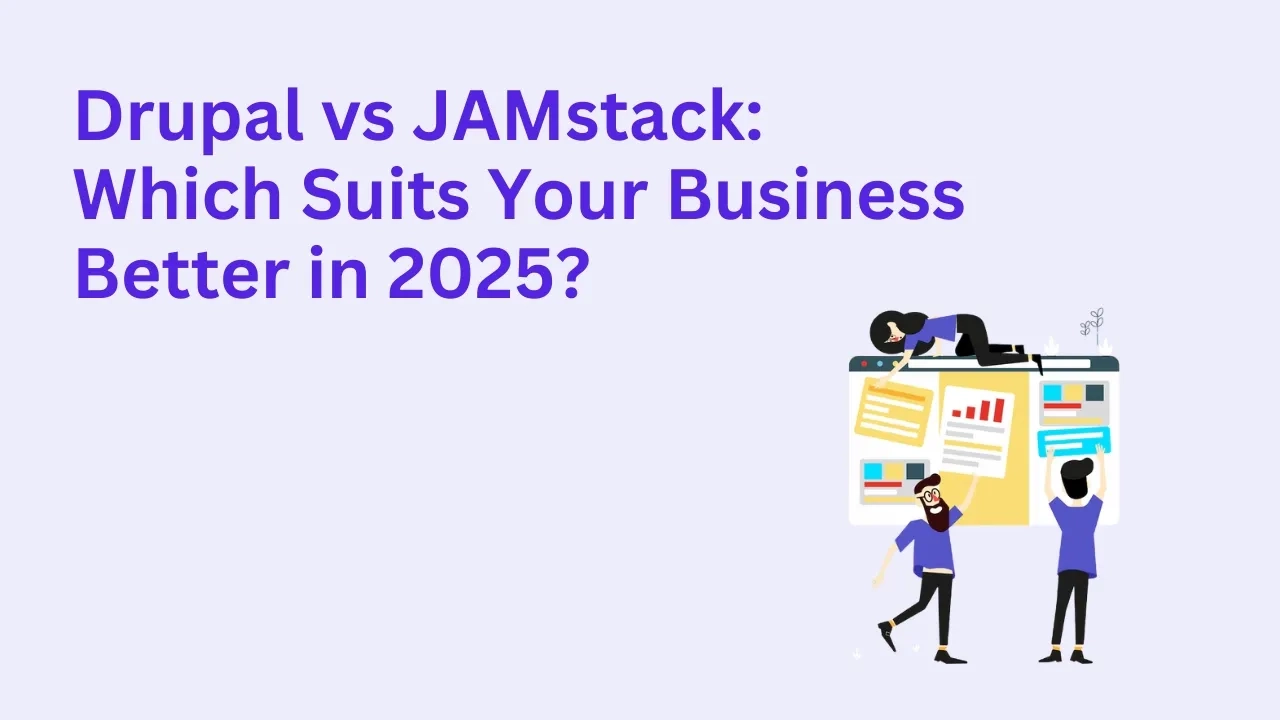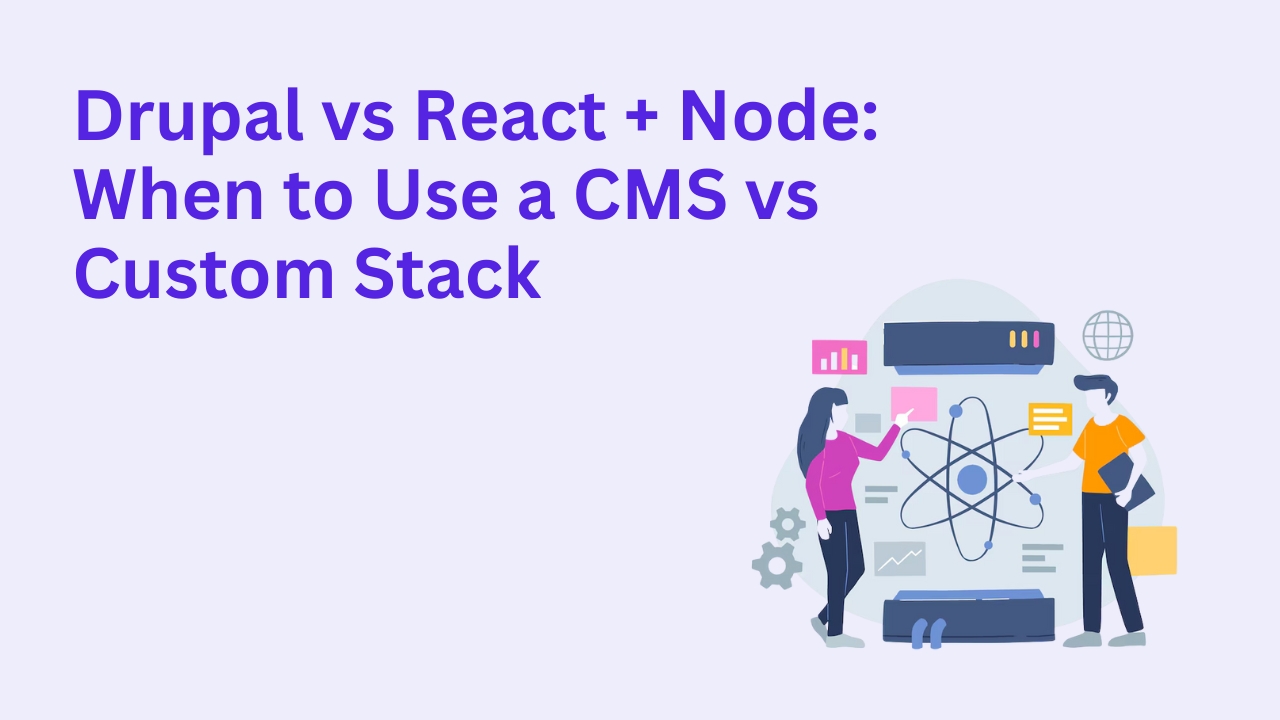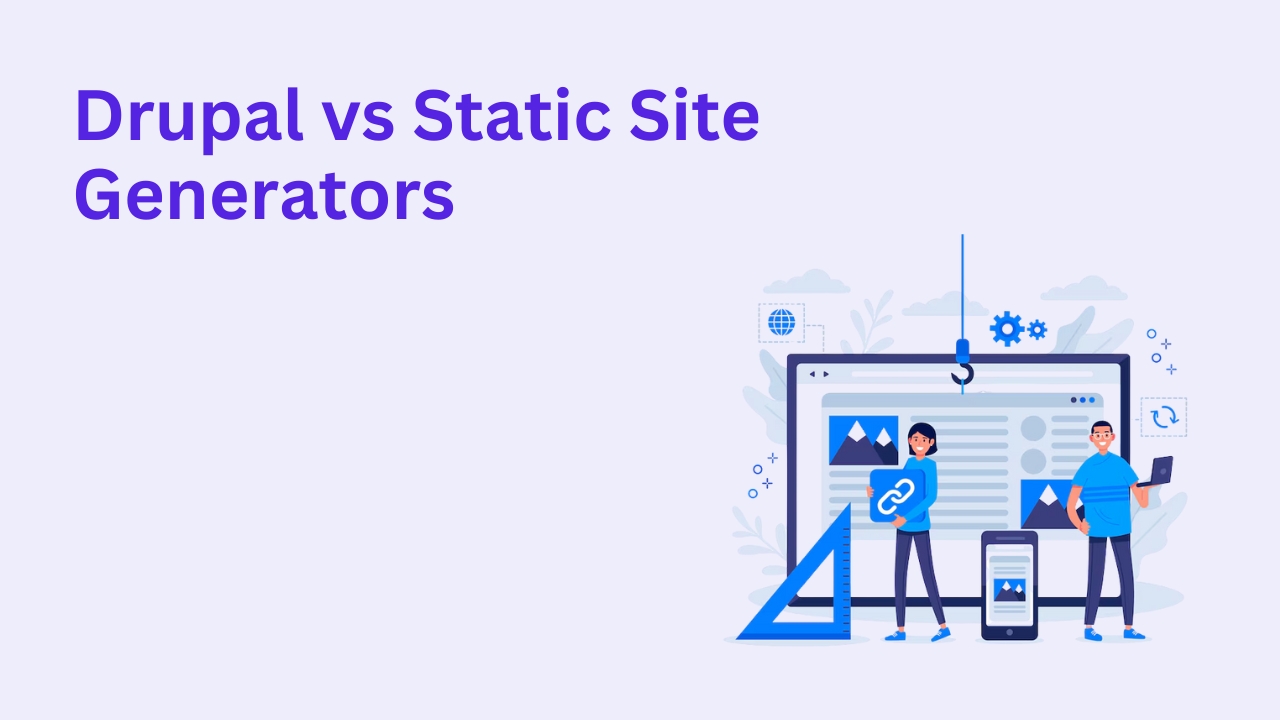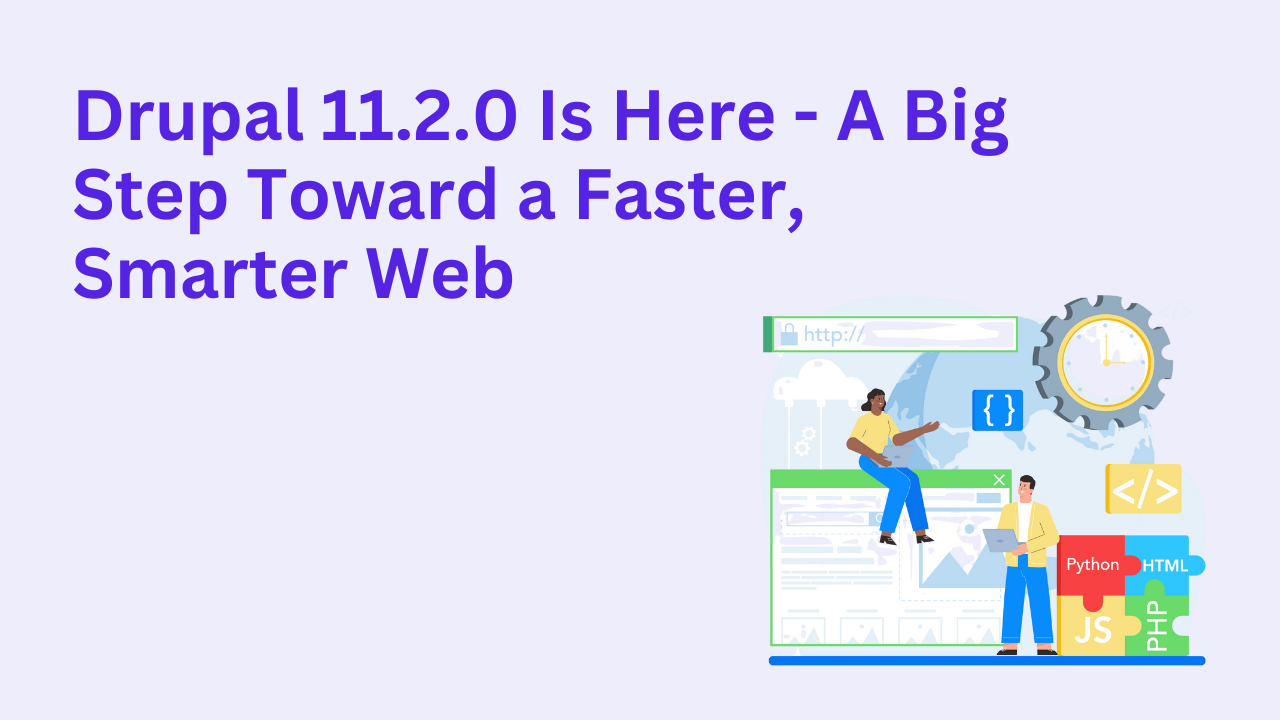Drupal vs JAMstack: Which Suits Your Business Better in 2025?

Choosing the right technology stack is one of the most critical decisions you’ll make for your business website. In 2025, two strong contenders are Drupal and JAMstack—each offering distinct advantages depending on your goals, technical resources, and budget.
So, which one is right for your business? Let’s break it down.
What Is Drupal?
Drupal is an open-source CMS (Content Management System) used to build complex, content-heavy websites. Known for its scalability, flexibility, and enterprise-grade security, Drupal powers government portals, higher education platforms, media websites, and Fortune 500 companies.
With the release of Drupal 10, it has become even more user-friendly with better front-end tools and improved editorial workflows.
What Is JAMstack?
JAMstack stands for JavaScript, APIs, and Markup. Unlike traditional CMS platforms, JAMstack sites are decoupled—meaning the front-end and back-end are separated. This architecture boosts performance, enhances security, and enables smoother development pipelines.
Common JAMstack tools include frameworks like Gatsby, Next.js, and static site generators like Hugo and Eleventy, all often connected to headless CMSes such as Contentful or Sanity.
Key Differences: Drupal vs JAMstack
1. Content Management and Flexibility
Drupal comes with a robust built-in admin interface and editorial workflows. It’s ideal if your team frequently updates content or needs moderation and access controls.
JAMstack requires integration with a headless CMS or manual content updates via Git. This can add complexity if your team is not technically inclined.
Winner: Drupal for businesses needing structured, collaborative content workflows.
2. Speed and Performance
JAMstack excels in speed due to pre-rendered static files. Pages load instantly, even on slow connections.
Drupal can be fast too, especially when paired with caching layers like Varnish or using a headless approach. However, it may require more server resources out of the box.
Winner: JAMstack, especially for brochure-style or static sites.
3. Security
Drupal has enterprise-level security and a dedicated security team. It’s trusted by governments and large corporations.
JAMstack’s decoupled nature minimizes attack surfaces, but overall security depends on how well the services and APIs are configured.
Winner: Tie — both are secure when implemented correctly.
4. Development and Maintenance
Drupal provides a more complete ecosystem. With thousands of modules, you often don’t need to reinvent the wheel.
JAMstack requires assembling multiple services, which can result in higher development time and complexity. You also need ongoing maintenance across several platforms.
Winner: Drupal for all-in-one needs, JAMstack for custom-built apps.
5. Scalability
Drupal is highly scalable and handles high-traffic, high-content scenarios well.
JAMstack is excellent for global scaling due to CDN delivery, but it might struggle with dynamic content-heavy applications unless paired with real-time APIs.
Winner: Drupal for large-scale dynamic sites, JAMstack for global static content delivery.
Cost and Time to Launch
JAMstack sites may be quicker to launch when limited in functionality but can incur higher long-term costs with microservices and API subscriptions.
Drupal may take slightly longer upfront, especially for complex builds, but once set up, it’s cost-effective and more centralized.
Who Should Choose Drupal?
Enterprises with complex content workflows
Higher education institutions
Government or secure platforms
Large-scale B2B portals
If your project involves structured content, multiple user roles, or you need a long-term scalable solution, Drupal is a strong fit.
Who Should Choose JAMstack?
Startups needing lightning-fast static websites
Sites with minimal content updates
Developer-centric teams
Projects relying heavily on modern JavaScript
JAMstack is a good choice if you’re focused on speed and already have the developer resources to manage multiple tools and services.
Final Verdict: Choose What Aligns with Your Goals
Drupal and JAMstack serve different purposes. If you’re looking for a mature, secure CMS that can handle complex workflows and scale as you grow, Drupal remains the go-to in 2025.
If you have a dev-heavy team and want the fastest load times for simple web experiences, JAMstack could be your pick.
Want help figuring out which approach suits your business? Talk to our Drupal experts at Drupalify — we’ll walk you through your best options without the tech jargon.








